In the city of Brantford, about 30 kilometers west of Hamilton, there is a very special feature in the Grand River that makes it one of the best section of the river for an afternoon paddle. The Grand River generally travels southward until it passes Brantford and winds its way north for almost 6 kilometers before making a giant 180 degree turn and travelling south once again. But what makes this place unique is after it completes this 14-kilometer detour, the river comes within just 600 meters (as the bird flies) of its upstream self.

The U-shaped feature is commonly referred to as an oxbow and it means that you can park and launch a boat upstream, paddle over 14 kilometers downstream, and then at the end, be within a 15 minute walk back to your car. Because of this as soon as the weather forecast predicted a sunny, 26 degree day in April, we decided to give it a whirl.

We left from the Cockshutt Bridge Access Point located along Erie Avenue on the southside of Brantford. And before you go and search that name I will tell you that it is the last name of 13th Lieutenant-Governor of Ontario and also a small village in England. Anyway, we parked the car in the lot adjacent to the bridge and carried our kayaks, gear, and a fearfully large, stowed away spider just a short distance to the river bank.
As is the case on any warm, sunny day we were not the only ones with this idea. Lining the banks near the start were dozens of fisher people, people having a picnic, and of course other paddlers. While this was our first time on the Grand River and even though we had prepared for most things the river could throw at us, seeing our fellow river goers made us realize the worry was not mutual. While several people were smart and clearly had life jackets/PFDs and emergency packs, just as many took the chance and brought only their boat and their paddles.
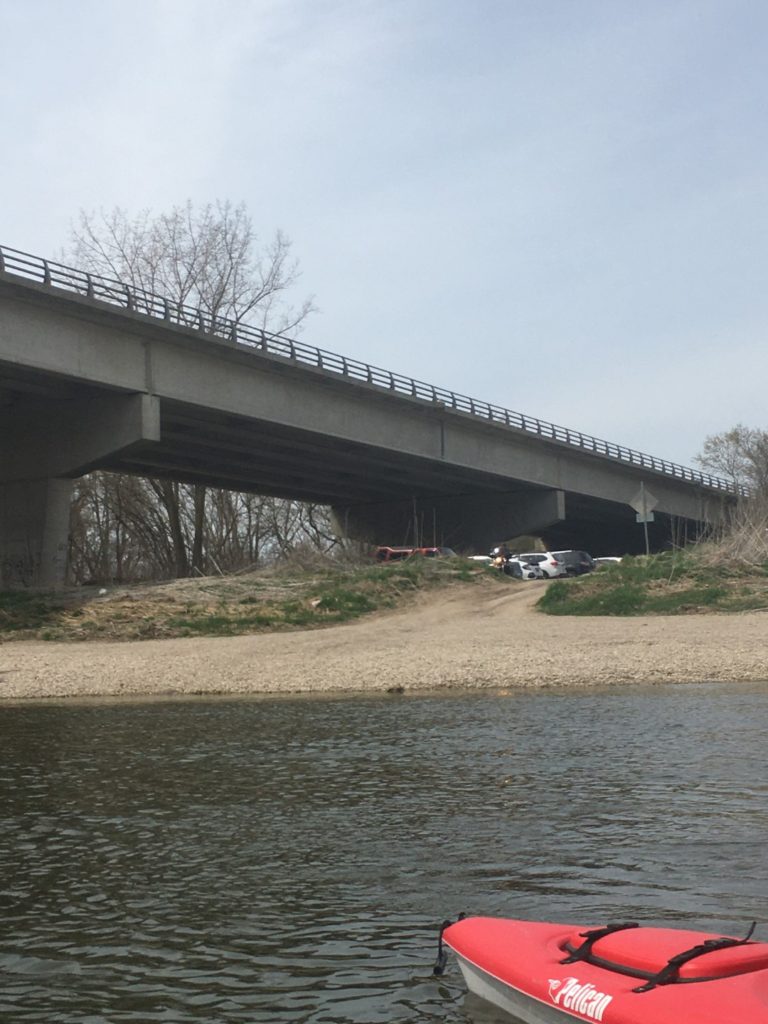
But nonetheless, shortly after the canoe ahead of us and its two “PFD-less, skinny-jean-wearing-teenage” occupants set off, so did we. The Grand River is a Canadian Heritage River and from the water it becomes clear why this river became such a crucial lifeline for the indigenous people and settlers who came before us. Its gentle flow and relatively shallow depth, also means that it is a fantastic, quiet paddle, perfect for beginners looking to try river paddling.
The first five or six kilometers of the Oxbow is full of gentle, yet exciting meanders filled with small riffles and shoots. The water levels the day we went down were on the lower side and because of this we did run aground more than once on this first section but nothing that a quick shimmy could not free us from. Thankfully our plastic kayaks already have far to many scrapes and gouges to count, so this was not of much concern for us.
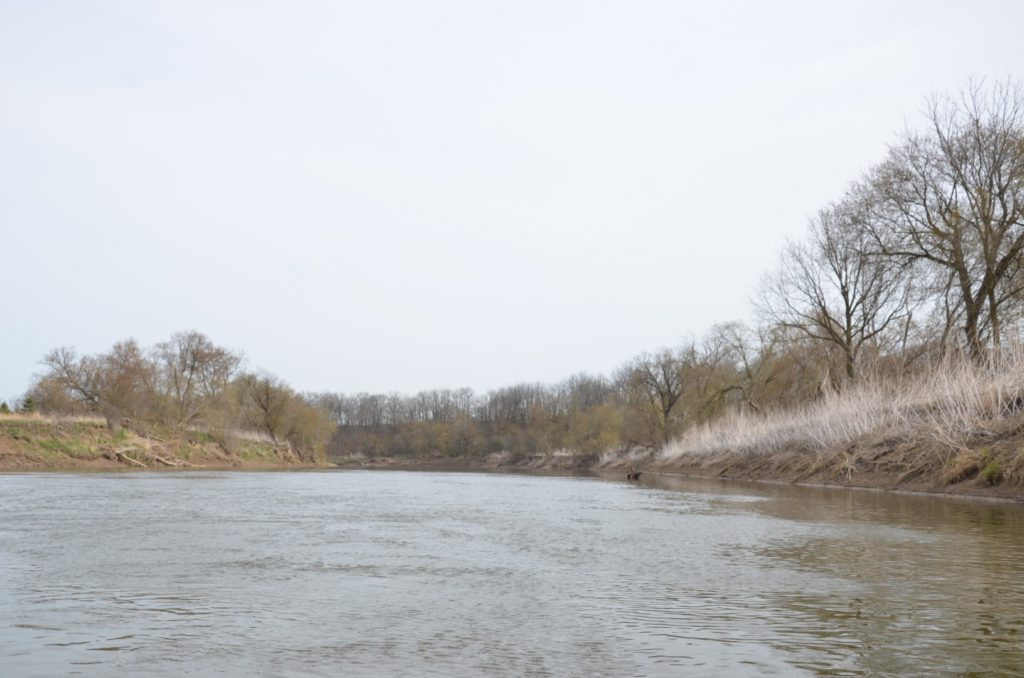
The low water levels also exposed many large tree trunks that have fell victim of erosion and have fallen into the river along its banks. And taking full advantage of these and the day’s hot sunlight were hundreds of turtles that could be seen perched on logs, stumps, and muddy banks of the river. Until now we naively thought that turtles were not found this far north but this trip certainly proved us wrong.
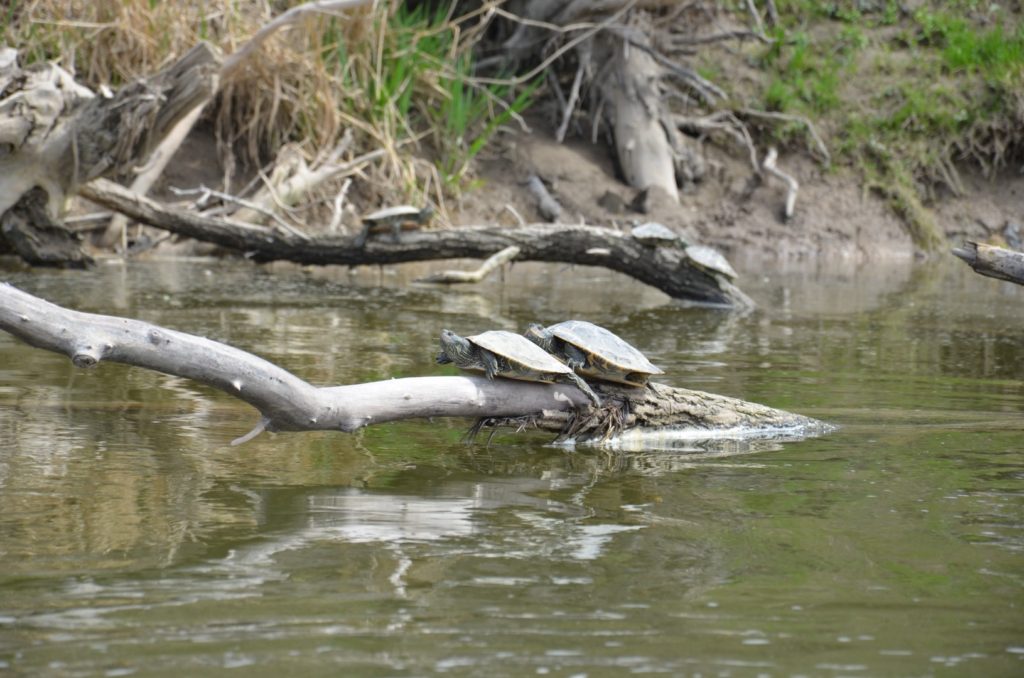

The first half of the river was certainly the most exciting as it was surrounded with wildlife and forest, and between the many meanders in the river were several fun little shoots and quick sections. At around the six kilometer mark we passed the concrete ruins of an old mill on the banks of the river and while we originally had planned to have lunch here, several people had already pulled their canoe onto the concrete slipway so we decided to keep paddling eventually finding a small beach a little further down river.
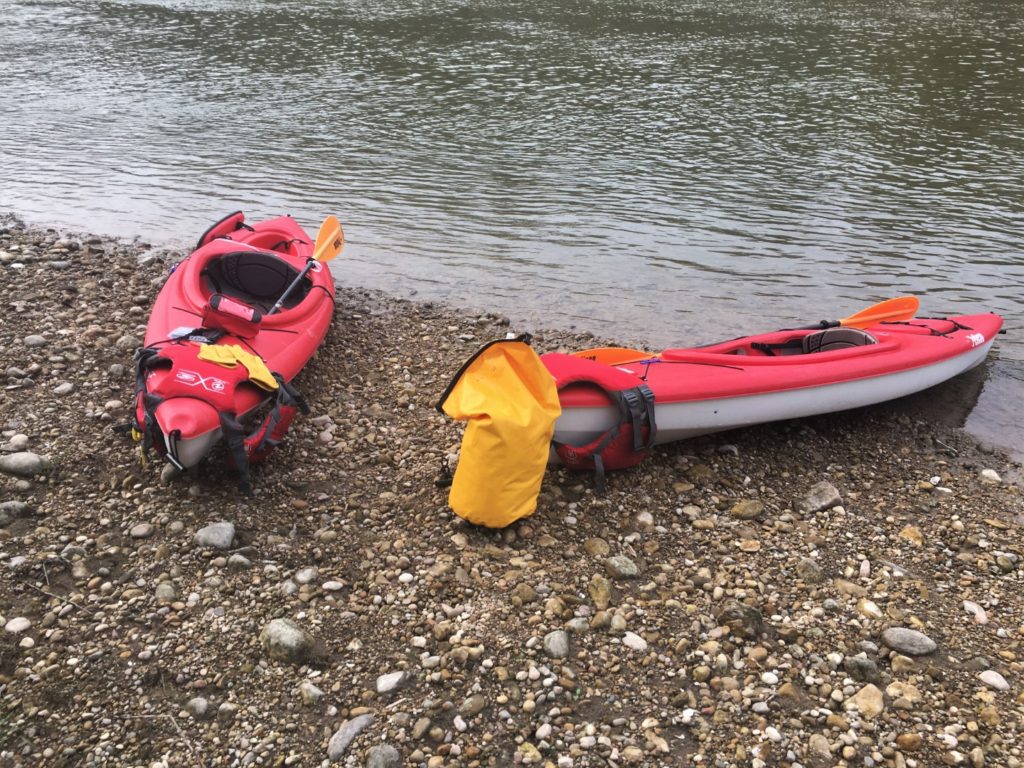
Here, not far from the apex of the bend, we had lunch before continuing on downstream. After this, the river slowed down substantially, and we soon became happy we stopped when we did because from the apex of the bend to just about the end of the paddle (some 8 kilometers away) there is just about no where you can pull your boat ashore to take a break or empty your bladder.
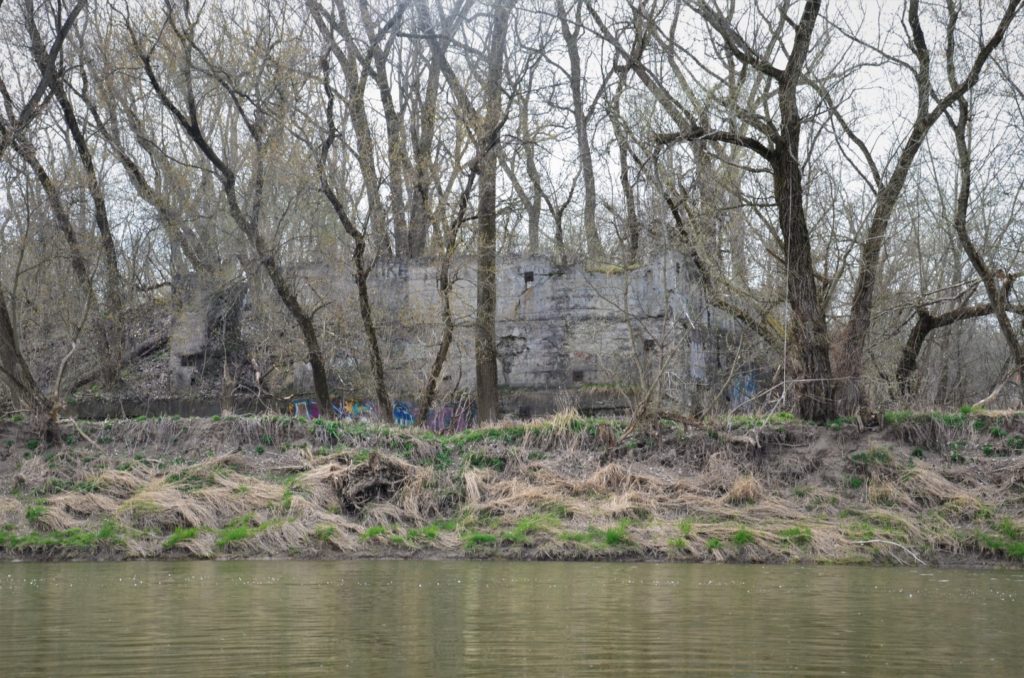
The remaining section of river, you also leave the forested landscape and begin the relatively straight shot to the end point. This section was certainly not as a exciting as the first bit, but by exploring some of the logs sticking out from the water and attempting to take pictures of the many muskrats that have made homes along the shore, kept us entertained. The river was also much deeper along this section so the risk of running aground disappeared as well.
With our bellies empty and bladders full we finished our journey about 130 meters from the Route 18 bridge where a narrow and muddy patch of river bank allowed us to pull our kayaks onto shore. From here, I left Lindsay to guard the kayaks and I walked about 15 minutes (about 1.5 kilometers) back to the car.
What was clear as I walked back to the car was how incredible it was that you can do a 14 kilometer downstream river route with the need for just one car. But what also became clear walking along the fast and busy roadway, was that a safe sidewalk or trail is certainly needed for the scary section of road.
But aside from the dangers of walking back to the car, the Oxbow portion of the Grand River is a natural wonder and a kayakers (especially beginners) paradise. With just the need for one car, anyone can traverse this spectacular section of one of Canada’s most historic rivers.




